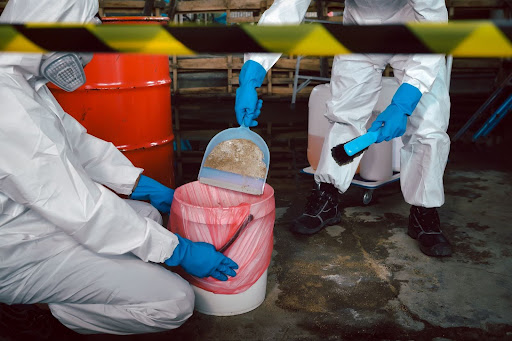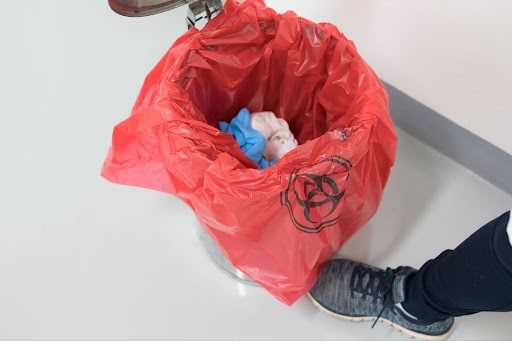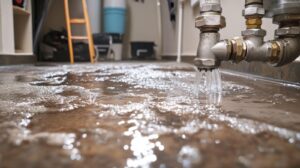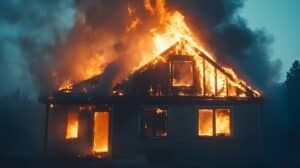Regardless of their profession, everyone should study biohazard signs and safety precautions to protect themselves from potential risks.
Many professionals, including healthcare specialists, waste management personnel, animal handlers, and laboratory technicians, undergo extensive training in handling biohazards. They regularly encounter bloodborne pathogens, hazardous waste, or other infectious materials, so they must receive suitable guidance to handle these situations properly; however, professionals aren’t the only ones who come in contact with biohazards.
The general public should also educate themselves about biohazard signs, clean-up, and safety precautions. You never know when your child might get sick in the middle of the night and miss the toilet or when sewage damage takes over your basement, so it’s best to be prepared for anything.
Stay tuned as we discuss 10 signs of biohazards so you can handle these situations like a pro.

What Are Biohazards?
The Occupational Safety and Health Administration (OSHA) defines biohazards, or biological hazards, as any substance that threatens the health of living organisms, particularly humans. Biohazards can exist in the form of toxins, microorganisms, or other biological agents that can cause harm. Some common examples of biohazards include human bodily fluids, medical waste, animal carcasses and droppings, mold and fungi, and viruses and bacteria.
Biohazards are categorized by the CDC according to their risk and the extent of the harm they cause:
- Biosafety Level 1 (BSL-1): Level one encompasses low-risk biohazards that are unlikely to threaten healthy organisms. Non-pathogenic strains of bacteria or viruses are examples of level-one biohazards. An example of a BSL-1 microbe is a nonpathogenic strain of E. coli.
- Biosafety Level 2 (BSL-2): BSL-2 agents build upon BSL-1 and so forth. Biohazards categorized as level two have a moderate level of risk. These agents can cause mild to moderate diseases in humans and animals.
- Biosafety Level 3 (BSL-3): Level three biohazards are capable of causing serious diseases. An example of a BSL-3 microbe is Mycobacterium tuberculosis, the bacteria that causes tuberculosis.
- Biosafety Level 4 (BSL-4): These biohazards are the most dangerous and are often fatal. They frequently include deadly pathogens for which there are no known treatments or vaccines.
Biohazard Signs
1. Biohazard Symbols
Perhaps the most straightforward way to identify a biohazard is through the biohazard symbol itself. This universally recognized symbol consists of a trefoil, circular shape in the center with three interlocking lobes surrounding it. The color is typically red or red-orange because that striking color is often associated with “warning” or “danger.”
This international symbol was developed in 1966 by Charles L. Baldwin of Dow Chemicals and Robert S. Runkle of the NIH. They were asked to create a highly recognizable design that was:
- Striking in form
- Unique and unambiguous
- Quickly recognizable
- Symmetrical
- Acceptable to all groups of varying backgrounds
The winning symbol is the same one used today and has stood the test of time for being both unique and memorable.
You might encounter a biohazard symbol in any setting where materials pose potential risks to health or the environment. This includes healthcare facilities, waste management, laboratories, pharmaceutical companies, industrial settings, radiology and nuclear facilities, emergency response and biohazard clean-up, first aid kits, personal protective equipment (PPE), and more.
2. Sharps Container
If you’ve ever received a vaccine or worked in a medical facility, you’re probably familiar with a sharps container. This red-orange container is used to house used needles, syringes, or other sharp objects that could be contaminated. The container is labeled with a biohazard symbol as well as the word “SHARPS” on an orange background to remind workers to dispose of sharp objects safely. If you notice this bin in a public setting, exercise serious caution and avoid contact with it.
3. Warning Signs
Areas containing a biohazard are often tagged with a direct sign. It should be made extremely clear that there has been a biohazard in that area by using caution tape and signs labeled “Biohazard Area,” “Caution: Biohazard,” or “Danger: Biological Hazard.” Always take these warning signs seriously and flee the area.
4. Emergency Broadcast
In the event of a public biohazard exposure, local healthcare workers will report a pattern of illness or a sudden wave of people seeking emergency medical attention. You might be alerted by an emergency radio or TV broadcast, a phone call, or a home visit from a member of your local health department or an emergency response professional.

5. Environmental and Biohazard Clean up Crews
Professional teams involved in cleaning up hazardous waste or spills wear PPE donned with a biohazard symbol. All workers cleaning up contaminated sites should receive detailed training to minimize the risks associated with exposure. Some bullet points from this extensive training include:
- OSHA and regulatory compliance, including local, state, and federal regulations governing biohazard cleaning
- Biohazard awareness training to learn about different types of biohazards
- The proper use and maintenance of PPE
- Proper biohazard cleaning procedures and decontamination processes
- Correct waste handling and disposal
- Safe practices for handling bloodborne pathogens and the risks associated
- Respiratory protection when dealing with airborne agents
- The safe handling, storage, and disposal of hazardous chemicals
- Methods to minimize contamination of soil, water, and air during biohazard clean-up processes
- How to respond to biohazard-related emergencies
- Proper forensic cleaning techniques
- Hands-on training in practical settings that simulate real-world biohazard clean-up scenarios
- Necessary documentation and reporting
- How to communicate effectively with distressed or affected people
6. Biological Containment Area
Biological containment areas are designated spaces in laboratories or research facilities for handling highly infectious organisms. These areas are permanently flagged with signs of the same name. Unauthorized access to these areas could result in severe illness or death, so they should always be avoided. Professionals receive extensive training to work safely in these designated spaces.
7. Spill Kits
Spill kits are specialized containers designed to manage accidental spills of hazardous materials. These kits typically include absorbent materials, protective gear, spill containment devices, chemical neutralizers, a shovel and/or broom, additional containers or bags, hazardous materials labels, an emergency response plan, safety data sheets, and an instruction manual or guide. You might have seen one of these kits while grocery shopping or during a hospital visit, but you might also find them at construction sites, warehouses, schools, airplanes, or other public places prone to potential accidents or spills.
8. Decontamination Stations
The presence of decontamination stations such as emergency showers or eye wash sinks signifies the potential for biohazard exposure. In many industrial settings, these stations are installed for quickly rinsing off hazardous chemicals that come in contact with the skin or eyes. Signs for these stations will be posted above or near them for adequate visibility. Becoming familiar with the location of decontamination stations can promptly prevent severe chemical injuries.
9. Unusual Odors
Strong odors can potentially indicate the presence of a biohazard in the area. Nearly everyone can pinpoint the exact moment they drive past a skunk, but how can you tell if a pungent smell is actually dangerous? Here’s how unusual odors can potentially suggest a biohazard:
- Exceptionally foul or putrid odors
- Chemical odors that cause eye irritation or respiratory symptoms
- Sickly odors like that of bacteria or fungi
- Ammonia-like odors
- Mold or musty odors
- Decomposition odors
- Fish or rotten egg odors
10. Emergency Response Vehicles
The presence of certain emergency response vehicles is a quick way to indicate a potential biohazard emergency. If you notice hazmat trucks or specialized medical units in a particular area, take this as a sign of a biohazardous incident. Ambulances, fire trucks, decontamination units, radiation response vehicles, or mobile laboratories might also be present. Seek immediate medical attention if you have fallen victim to a biohazardous incident; otherwise, flee the area.

What To Do During a Possible Biohazard Exposure
- Pay attention to official news sources to stay up to date on exposure information.
- Learn where to seek medical attention if you become ill
- Quickly flee any area if you notice suspicious matter
- Cover your mouth and nose with a mask or other fabric that can filter the air but still allow you to breathe
- Wash yourself thoroughly with soap and put on clean clothes
- Don’t share food or eating utensils
- Avoid crowds
- Follow the instructions given by your doctor
Black Diamond Water Damage & Disaster Restoration Can Help
Now that you know the biohazard signs to look out for, reach out to Black Diamond Water Damage & Disaster Restoration in the event of a biohazard emergency. Based out of Murray, Utah, we proudly serve Salt Lake City and surrounding areas. Our licensed and certified professionals are no strangers to proper biohazard cleaning and will help you through the restoration process. We’ll make sure the area is cleaned effectively and safely so it can be enjoyed again.
If biohazard cleanup is at the forefront of your mind, contact us through our site or call us at (801) 316-8997. We’ll restore your place back to its pre-damaged condition in no time. With over twenty years of Disaster Restoration experience, we do it all, and we do it right!
toto slot






